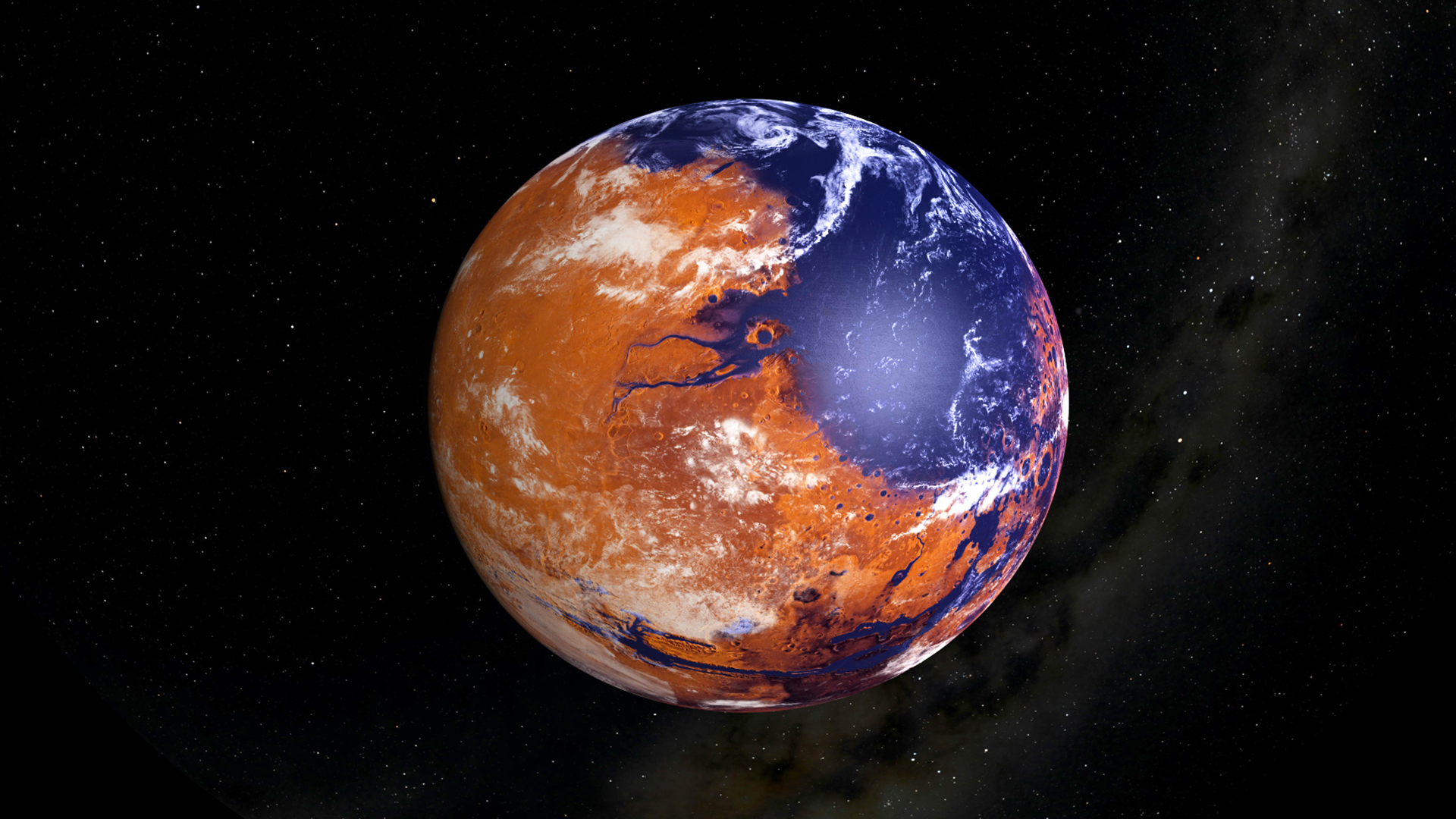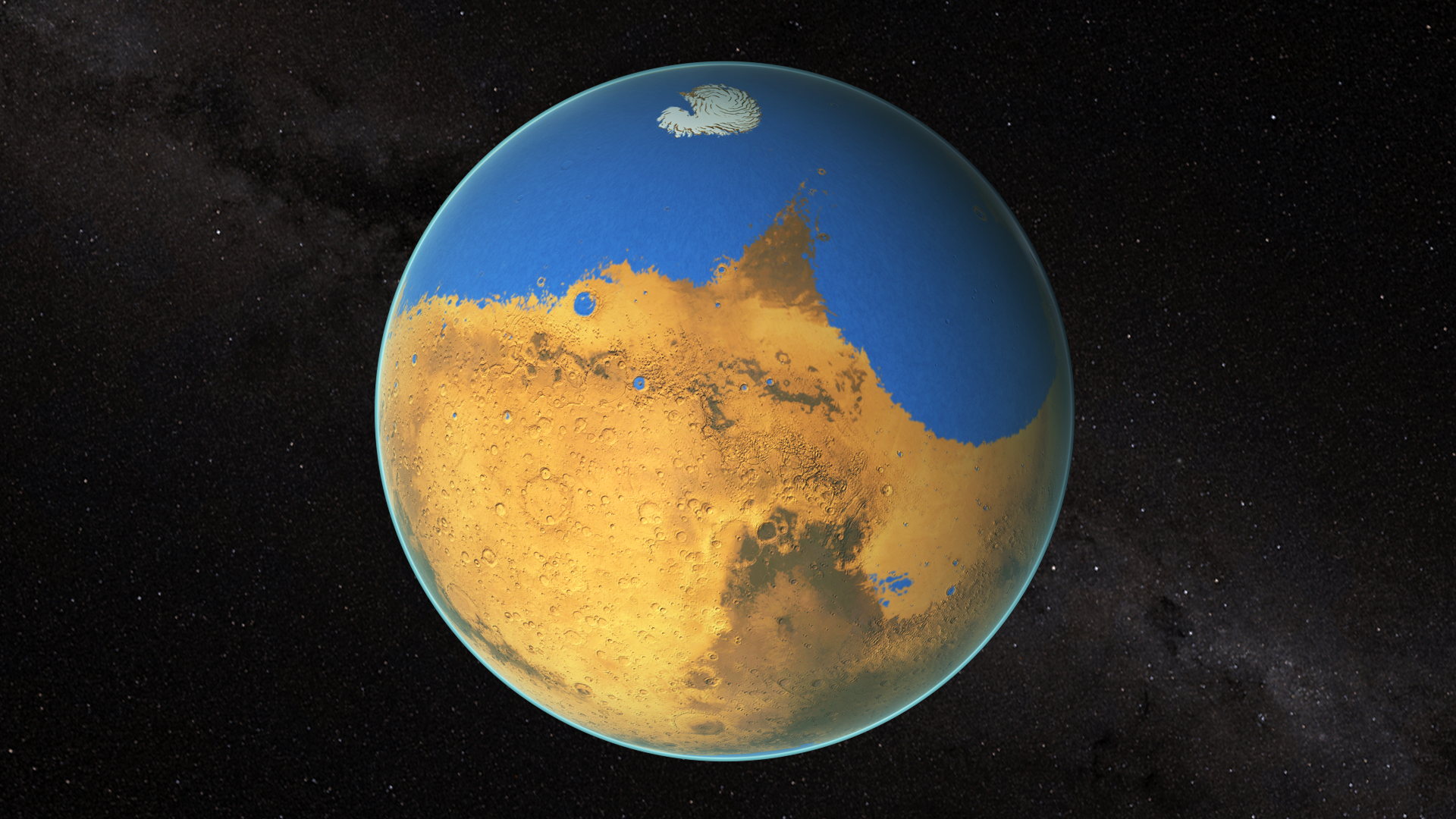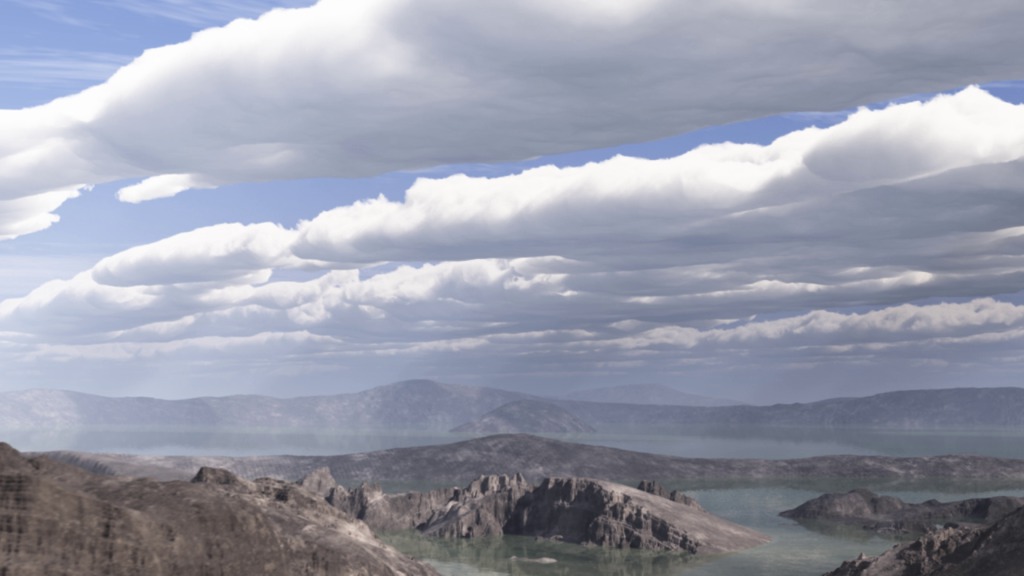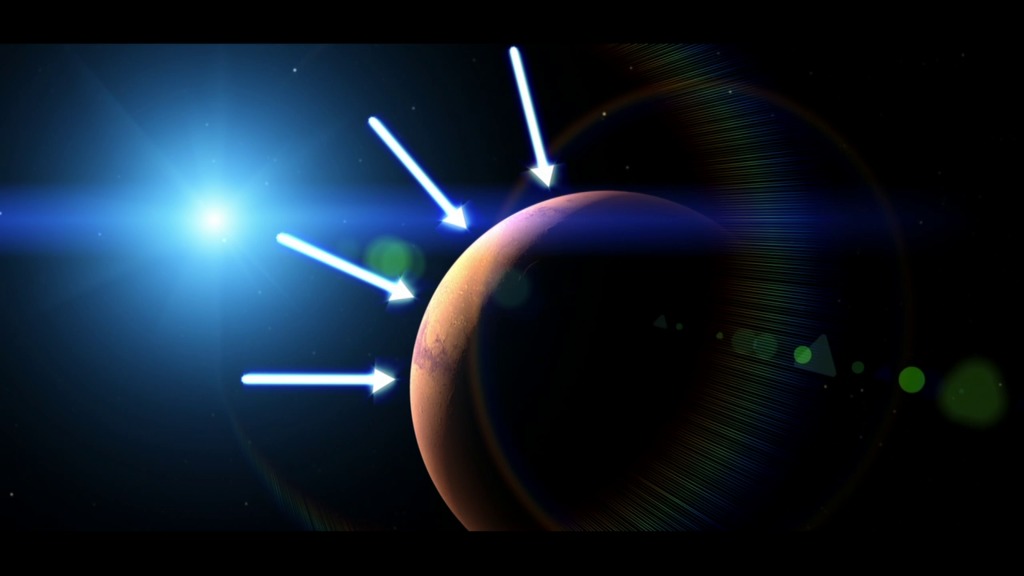Mars Evolution from Wet to Dry
These animations were originally created to accompany Invisible Mars, a Science-on-a-Sphere live presentation for the MAVEN mission. The animations have been rendered for use in other formats, including the NASA Hyperwall. Learn more about MAVEN and about the Lunar and Planetary Institute.
Credit: Created for the MAVEN mission by the Lunar and Planetary Institute
This is an artist's model of an early Mars — billions of years ago — which may have had oceans and a thicker atmosphere. It was created by filling Mars' lower altitudes with water and adding cloud cover. The locations for the ancient ocean are based on current altitudes and do not reflect the actual ancient topography.
This animation transitions from an early, wet Mars to present-day dry Mars.
This animation transitions from an early, wet Mars to present-day dry Mars, and back again.
This artist's model shows where the landing sites are on Mars for Viking 1 & 2, Spirit, Opportunity, Phoenix, and Curiosity, in comparison to possible locations of an early ocean which may have existed billions of years ago. In this depiction, the atmosphere is thicker than the present-day Mars atmosphere, which is only about 1% of Earth’s. The locations for the ancient ocean are based on current altitudes and do not reflect the actual ancient topography.
This is an updated map of landing sites on Mars that includes Viking 1 & 2, Pathfinder, Spirit, Opportunity, Phoenix, and Curiosity.
This animation transitions from present-day dry Mars to an early, wet Mars.
This is a map of current Mars, created using NASA mission data. It can be compared with the artists' rendering for an early, wet Mars and the landing sites on Mars.
For More Information
See NASA.gov
Credits
Please give credit for this item to:
NASA/MAVEN/Lunar and Planetary Institute
-
Scientist
- Bruce Jakosky (LASP)
-
Animator
- John Blackwell (LPI)
-
Producer
- Christine Shupla (LPI)
-
Support
- Dan Gallagher (USRA)
- Aaron E. Lepsch (ADNET Systems, Inc.)
Release date
This page was originally published on Wednesday, July 25, 2018.
This page was last updated on Thursday, November 9, 2023 at 12:29 PM EST.




![Learn about the “disappearance” of the solar wind at Mars that was witnessed by MAVEN – an event last seen nearly a quarter-century ago at Earth.Complete transcript available.Universal Production Music: “Space Museum” by Harry Gregson Williams [BMI], Atmosphere Music Ltd. [PRS]; “Currents and Crime Scenes” by Dylan Matthew Love and Harry Gregson Williams [BMI], Atmosphere Music Ltd. [PRS]Watch this video on the NASA Goddard YouTube channel.](/vis/a010000/a014400/a014477/MAVEN_Solar_Wind_Disappear_V4.jpg)